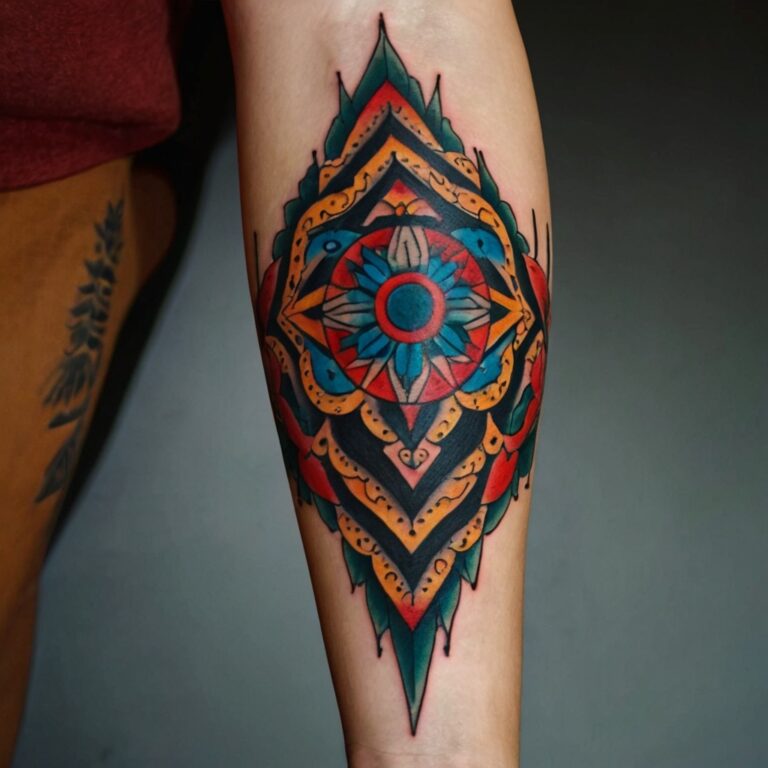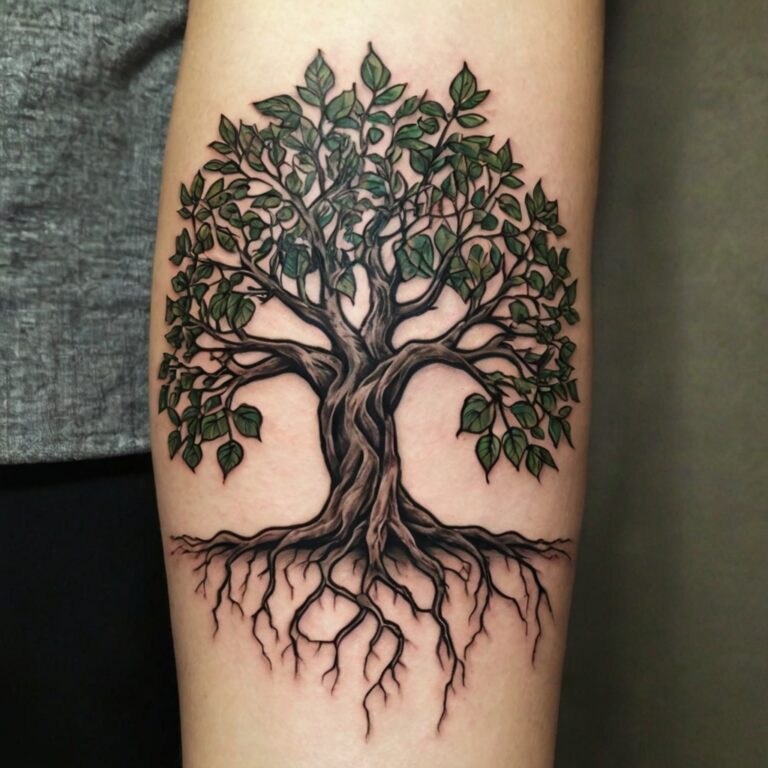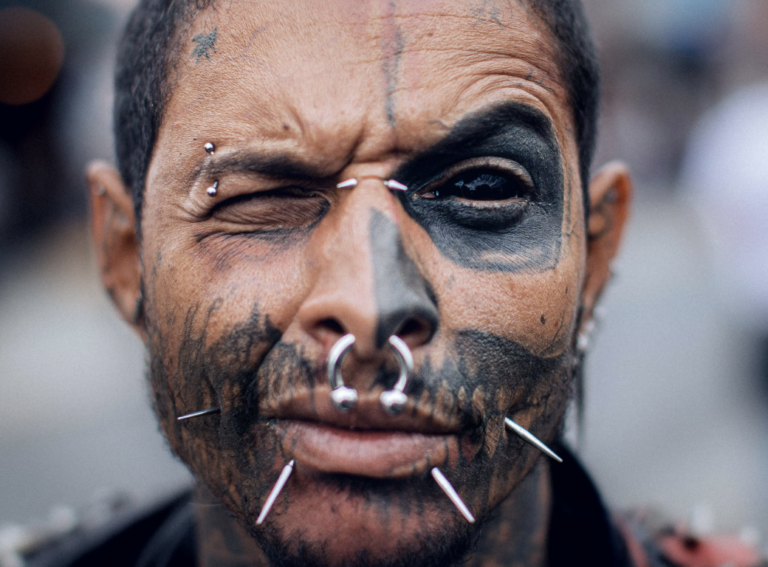Deciding whether to wrap your tattoo in cling film? It's an important aftercare decision that can greatly impact the healing process. Cling film can provide a barrier against bacterial contamination, keep the area moist for faster recovery, and even protect your clothing from excess ink.
However, prolonged use can lead to skin maceration, delayed healing, and increased infection risks. One wrong move, and your beautiful ink could be compromised.
So, how long should you keep that cling film on, and what alternatives might be better for you? The answer lies in the fine art of maximizing benefits while minimizing risks. Let's explore this together.
Benefits of Cling Film Wrapping
Wrapping your fresh tattoo in cling film helps to protect it from bacterial contamination, reducing the risk of infection and promoting a smooth, trouble-free healing process. This simple step can make a huge difference in the outcome of your tattoo.
By covering your tattoo with cling film, you're creating a barrier between your skin and the outside environment, preventing bacteria and other contaminants from entering the wound.
Moreover, cling film wrapping helps to keep your tattoo moist, which is essential for the healing process. A moist environment promotes faster healing, reduces scabbing, and minimizes the risk of scarring. It also helps to reduce irritation and discomfort, making the healing process more comfortable for you.
Additionally, cling film wrapping makes it easier to clean and care for your tattoo, as it prevents soap and other cleaning products from irritating the wound.
Risks of Prolonged Use
Prolonged use of cling film on your fresh tattoo can lead to fluid buildup, potentially causing irritation, infections, and complications that can greatly delay healing. This is because cling film creates a warm, moist environment that's ideal for bacterial growth. As a result, you may experience increased redness, swelling, and discomfort.
Here are some risks to watch out for:
- Infection: Bacteria can thrive under the cling film, leading to infections that can be serious and even require antibiotics.
- Skin maceration: The constant moisture can cause your skin to become soft and fragile, leading to skin maceration and further complications.
- Delayed healing: Prolonged use of cling film can impede the natural healing process, causing your tattoo to take longer to recover.
It's essential to balance the benefits of cling film wrapping with the potential risks. Be sure to remove the cling film regularly to allow your tattoo to 'breathe' and promote healthy healing.
Ideal Cling Film Duration
You should ideally keep the tattoo wrapped in cling film for a period of between a few hours to a few days, depending on the size and location of the tattoo. Specific guidelines vary depending on the size of the artwork.
For small line-work pieces, the cling film can be left on for one to two days. For palm-size tattoos, it's best to leave it on for two to three days. For larger pieces, your tattoo artist will provide personalized guidance on the ideal duration.
It's important to change the cling film regularly, as it can trap moisture and lead to infection. The recommended frequency is at least three times a day and before bedtime. Remove the existing cling wrap, wash the tattoo gently with anti-bacterial soap, and reapply fresh cling film.
Always follow your artist's instructions, as they're tailored to the specific type of bandage or wrap used and the individual healing needs.
Rewrapping Techniques
When rewrapping your tattoo, always wash it with antibacterial soap and pat it dry before applying fresh cling film to prevent bacterial growth. This vital step guarantees that any bacteria that may have accumulated under the previous wrap are eliminated, reducing the risk of infection.
It's also essential to change the cling film regularly to avoid trapping moisture and promoting bacterial growth.
- Cleanse before Wrapping: Gently clean the tattoo with antibacterial soap to remove any debris and bacteria.
- Dry Thoroughly: Pat the tattoo dry with a clean towel to ensure no excess moisture remains.
- Fresh Cling Film: Apply new, sterile cling film to ensure a clean, breathable environment for your tattoo to heal.
Breathability Concerns
Cling film, though effective at keeping foreign particles out, is a non-breathable material that can lead to moisture buildup if left on the tattoo for too long, which may greatly contribute to the risk of infection. This is one of the primary concerns when deciding whether or not to use cling film as part of your aftercare routine.
It's vital to be aware that cling film doesn't allow for airflow or the release of excess humidity, which can lead to bacterial growth. Not surprisingly, not all tattoo artists agree on how long to leave cling film on. Some recommend keeping it on for a few hours, while others suggest alternating between cling film and proper cleaning throughout the day to reduce moisture buildup.
To mitigate these risks and ensure that your tattoo heals properly, it's important to weigh the benefits of using cling film against the potential drawbacks. One alternative is to use a breathable protective film that can provide similar protection without restricting airflow, which is essential for the healing process.
Alternative Protection Methods
If you're searching for an alternative to cling film, explore breathable protective films that are specifically designed to facilitate airflow and reduce the risk of infection. These options provide a more detailed approach to shielding your tattoo from the environment while still allowing your body's natural healing processes to take place.
Some breathable films to explore include:
- Recovery+ and Ink-Eeze: These films are available on Amazon and are tailored for tattoo aftercare, offering a more effective solution than standard cling film.
- Dermalize: This is another option used by some tattoo enthusiasts, recognized for its effective protection and breathability.
- Tattoo Film: This film, as discussed in the YouTube video, is tailored for active use and provides a more thorough aftercare method.
These alternatives allow for enhanced healing conditions and reduced risk of bacterial growth, making them a more advisable choice for protecting your tattoo during the healing process.
Frequently Asked Questions
Is It Safe to Use Plastic Wrap Instead of Cling Film?
No, it isn't safe to use plastic wrap instead of cling film for your tattoo aftercare.
Both serve the same purpose of keeping your tattoo protected and clean, but they're non-breathable materials that can promote moisture buildup.
It's best to follow your tattoo artist's specific instructions and only use them for a short period to avoid any potential issues.
Can I Reapply Cling Film With Micropore Tape?
Yes, you can reapply cling film with micropore tape when following your artist's instructions. Typically, remove the existing cling wrap, clean the tattoo gently, and apply new cling film using micropore tape to keep it in place.
This helps keep the tattoo moist and prevents sticking to clothing. Do it at least three times a day and before bed, unless your artist advises otherwise.
Prioritize clean, gentle handling to guarantee proper healing.
How Soon Can I Remove the Cling Film After a Small Tattoo?
You can remove the cling film from your small tattoo within 2 to 4 hours after getting it, following the artist's instructions.
After removal, gently wash the tattoo with soap and water, pat it dry, and apply a high-quality tattoo cream for proper healing.
Should I Clean My Tattoo Before Reapplying the Cling Film?
Yes, you should clean your tattoo before reapplying the cling film. Wash your hands before touching your new tattoo and gently clean the area with anti-bacterial soap to keep plasma and excess ink in check.
Take off the existing cling wrap, follow the cleaning steps above, and put new cling film over the tattoo. If needed, reapply fresh cling film using micropore tape.
Is It Normal for Excess Plasma and Ink to Accumulate Under the Cling Film?
Yes, it's normal for excess plasma and ink to accumulate under the cling film. This is a natural part of the healing process for your tattoo.
Just make sure to change the cling film as needed by removing the old one, washing the tattoo gently, and reapplying fresh cling film to keep your tattoo clean and protected during healing.
Conclusion
By now, you know the ins and outs of wrapping your tattoo in cling film. It's a delicate balance of benefits and risks.
While it protects and promotes healing, prolonged use can lead to infection and delay recovery.
Listen to your tattoo artist's guidance, follow proper rewrapping techniques, and consider breathable alternatives.
By doing so, you'll guarantee the best possible results for your new ink.







